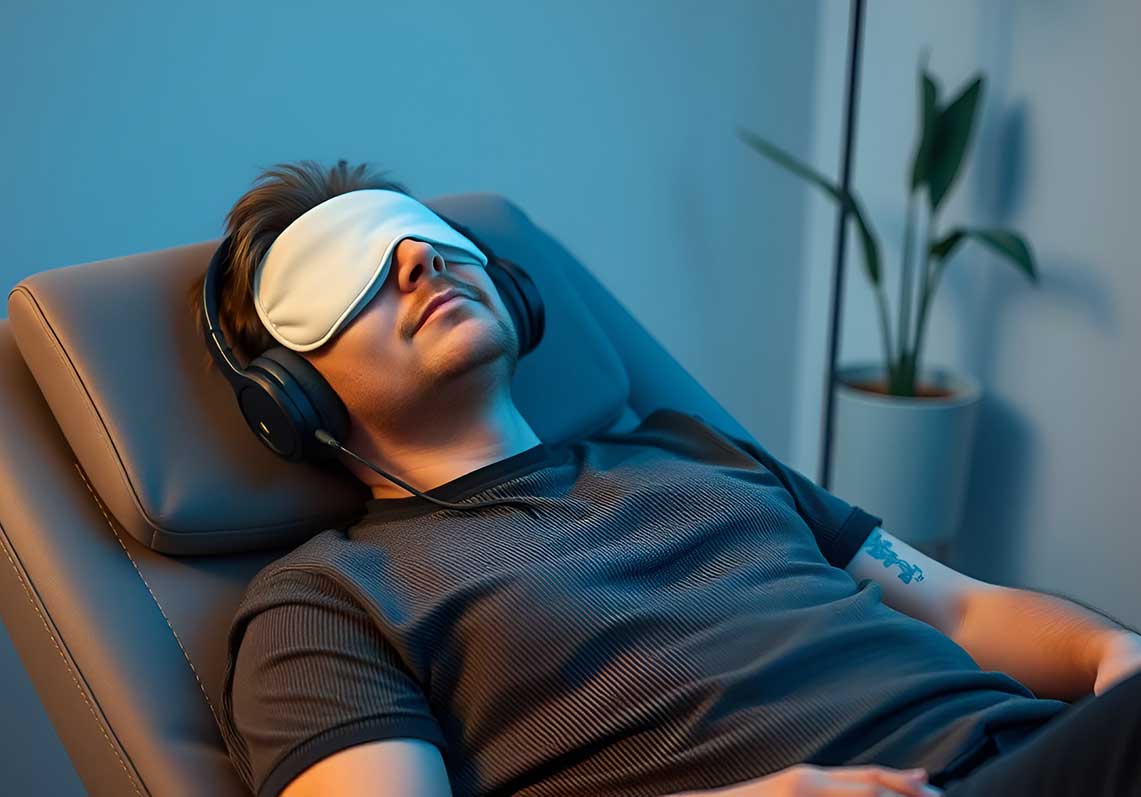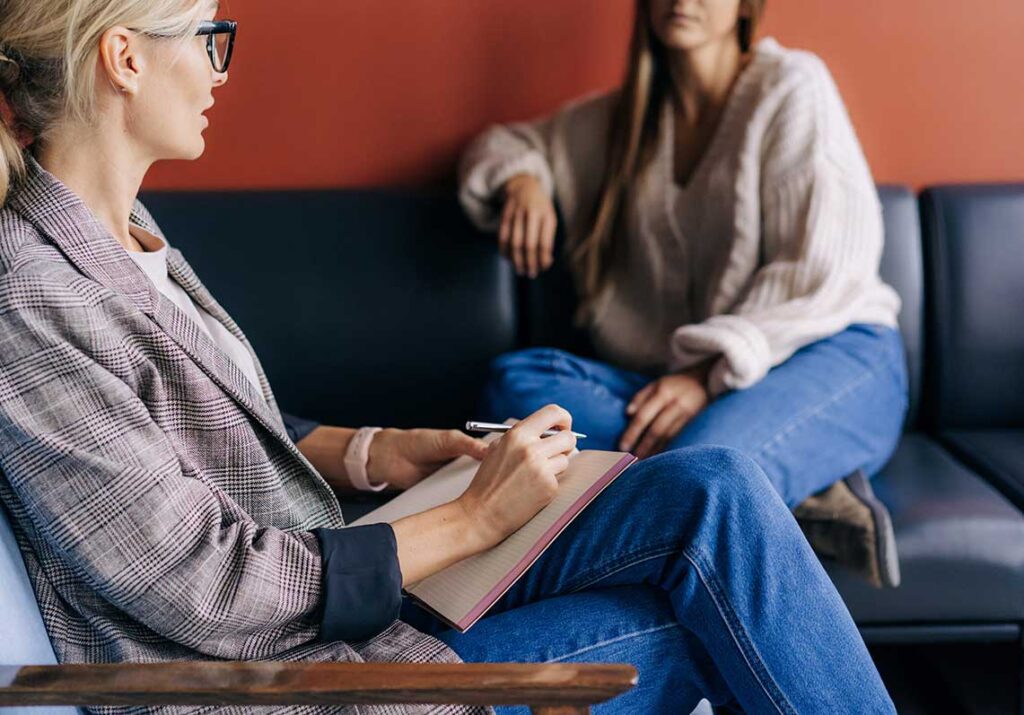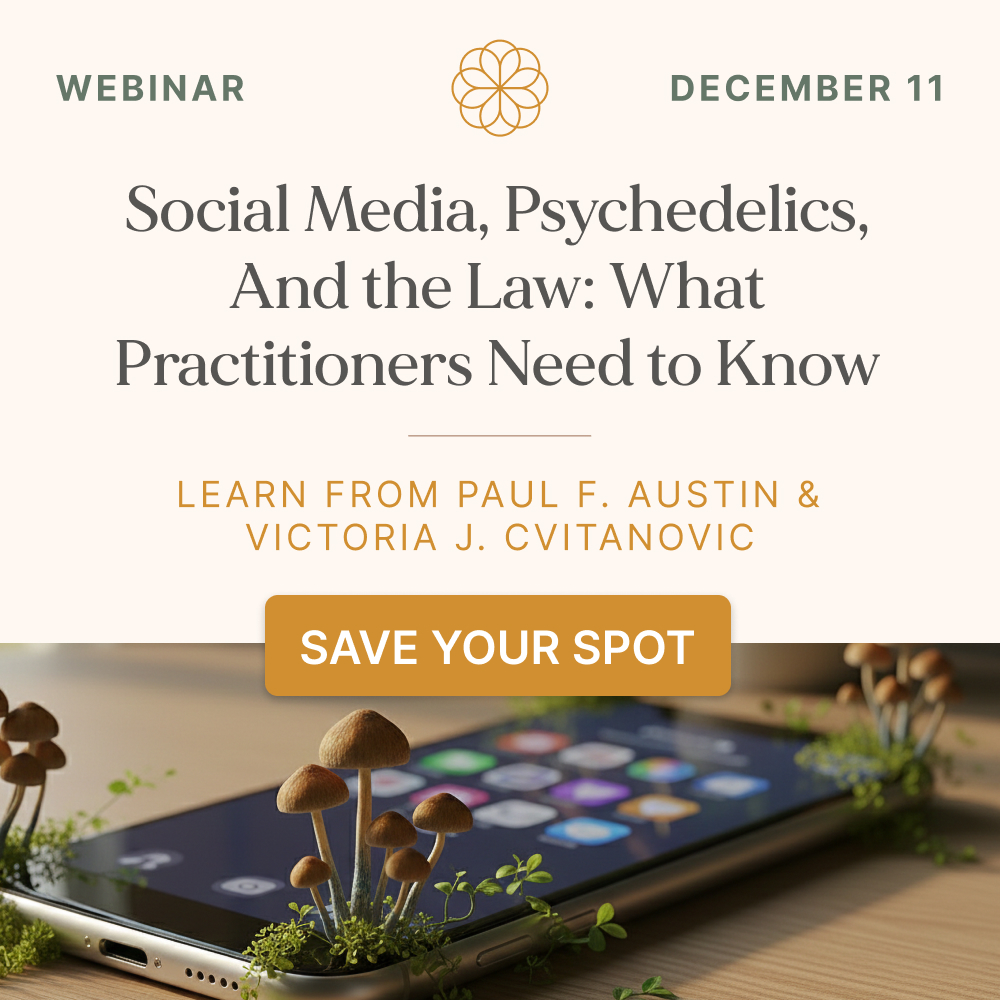The concept of “set and setting” was covered extensively by Norman Zinberg in his 1986 book Drug, Set, and Setting, but the phrase was coined at least a couple of decades before that and is often attributed to psychologist and psychedelic advocate Timothy Leary. (1) (2)
The idea is that every psychedelic experience should be framed by the user’s “set” (their mindset) and “setting” (their surroundings). To ensure the most optimal conditions, we can expand upon this concept with the “6 S’s of the psychedelic experience”:
Set
Mindset is everything during a psychedelic experience, and starting with a foundation of positivity and openness is at the heart of many of the most impactful psychedelic experiences.
The psychedelic journey should be seen as a three-day experience:
- Day One: The day before the experience, encourage the client to remain stress-free. They should spend some time in self-reflection, doing something that they enjoy, something that can detach them from the stresses of their life and make them comfortable. It could be a stroll around the park, a day spent reading, or just spending time with their loved ones. Ask them to note down their preconceptions, concerns, and expectations.
- Day Two: The experience itself. This can be guided by a psychedelic practitioner, accounting for the other 5 S’s discussed below. A practitioner can support their client throughout and help them to alleviate any concerns they have before their journey.
- Day Three: After a client’s psychedelic experience, it’s time to integrate what they learned. Discuss their experiences with them and teach them how to integrate them into their life.
Setting
The “setting” refers to the environment the journey takes place in—ideally, a comfortable, safe, and uncluttered space.
It can be indoors, outdoors, or both. It largely depends on the individual’s experience and what they are comfortable with. There is no ideal space. A peaceful outdoor setting can be conducive to a positive experience, but obviously, that won’t work for everyone. Conversely, they may feel claustrophobic indoors and prefer a peaceful outdoor setting.
Sound is often integral to the experience, whether it’s the sound of nature—rolling streams, chattering birds, wind blowing through the trees—or peaceful music. There are some good music recommendations in our community, including this article and these playlist recommendations.
Instrumental music, such as classical or ambient, is often used, but as with everything else, it all comes down to individual preferences.
Substance
The substance and dose have the biggest impact on a psychedelic experience. As such, they should be discussed with an experienced psychedelic practitioner. he following is a rough guide to dose strengths by substance: (3)
- LSD
- Microdose: 10-20 ug
- Light Dose: 20-75 ug
- Medium Dose: 50-150 ug
- Strong Dose: 150-400 ug
- Heavy Dose: 400+ ug
- Psilocybin Mushrooms (Dried)*
- Microdose: 250 mg
- Light Dose: 250 mg – 1 g
- Medium Dose: 1 – 2.5 g
- Strong Dose: 2.5 – 5g
- Heavy Dose: 5g
- DMT
- Microdose: 2 – 5 mg
- Light Dose: 10 – 20 mg
- Medium Dose: 20 – 40 mg
- Strong Dose: 40 – 60 mg
- Mescaline
- Microdose: 100 mg
- Light Dose: 100 – 200 mg
- Medium Dose: 200 – 300 mg
- Strong Dose: 300 – 500 mg
- Heavy Dose: 500 – 700 mg
*Dose ranges vary by mushroom strain and potency
Sitter
A guide is always recommended during a psychedelic experience, especially for first-timers. They can sit with the individual, support them, console them if things take a negative turn, and ensure they are safe throughout.
Many people who sit with psychedelics choose to do so alone, and that’s fine if they get everything else right and are in a comfortable and safe setting.
For the best experiences, work with a psychedelic practitioner. They have the experience and knowledge needed to prepare you, guide you, and help you integrate your experience.
Session
The session is the experience itself. This can vary by substance and dose, and you can get more information in our substance guides, but the stages of a psychedelic journey typically include:
- Ingesting the psychedelic medicine
- The initial onset
- Opening up and letting go
- The plateau
- The gentle glide
- The end of the session
Situation
Once the session is over, it’s time to focus on integrating the experience. Integration begins as soon as the psychedelic experience ends, and it could extend anywhere from a few hours to many months.
A psychedelic practitioner can work with someone who sits with psychedelics to help them understand their experience and discover ways to work those learnings into their life. Some of the questions they may ask include:
- What did you learn about yourself and your situation?
- Did you have any groundbreaking discoveries?
- Do you see your life going in a new direction?
They shouldn’t be encouraged to change their life straight away. However, in the afterglow of a positive experience, they’ll be feeling a lot of positive emotions, and they need to be put to good use. Encourage them to consider making changes and start setting the foundations.
How to Mitigate Risks When Sitting with Psychedelics
Following the 6 S’s closely can help to mitigate many of the risks of a psychedelic experience. One of the key things to remember is that it’s all about the individual and their personal preferences.
Don’t push them into doing anything that they are not comfortable with. An outdoor experience may be great for getting them close to nature and truly opening them up, but not everyone is comfortable being outdoors during a psychedelic journey, especially if they are very introverted and new to psychedelics.
Work with them. Analyze their situation. Discuss prior experience, goals, expectations, and preferences, and ask them about preexisting health conditions and possible medication contraindications to discover anything that could cause an adverse reaction.
Finally, support them throughout and work closely with them to integrate the experience. Use positive thoughts and emotions to make impactful changes; turn around challenging experiences to find the good in the bad.
Conclusion: Best Practices for Preparation and Integration
Whether it’s their first experience or their hundredth, if you’re supporting someone through a psychedelic experience, always consider the 6 S’s.
Anyone preparing for a psychedelic experience on their own should also keep these in mind. However, for an experience that is both safe and transformative, having someone present—whether an experienced psychedelic coach or even a trusted friend—is strongly recommended.






